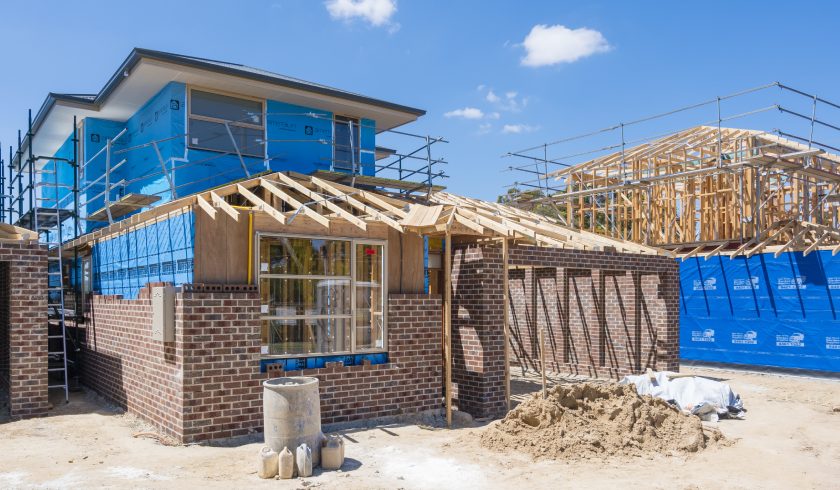Building materials and builder shortage put pressure on property markets
Price hikes and delays on Australian construction sites have resulted from a dramatic surge in global demand for building supplies during the COVID-19 pandemic, and this is just the tip of the iceberg.

The Herron Todd White Property Review for September 2021 reported that due to low-interest rates, an overall bullish outlook among many stakeholders, and government assistance, demand for residential allotments is robust in many regions around the country.
To continue reading the rest of this article, please log in.
Create free account to get unlimited news articles and more!
Contributing to this is the Australian government initiative to boost consumer confidence in the domestic building sector through the HomeBuilder grant, which was launched in June 2020 to encourage buyers to go forward with purchases or renovations that may have been put off owing to concerns about the COVID-19 pandemic’s effects.
The HomeBuilder grant of $25,000 has been met with great enthusiasm that the government had to extend the application deadline from December 2020 to March 2021, albeit lowering the grant to $15,000, with a leeway to submit documentation up to 14 April 2021. This successful initiative resulted in 135,000 total grants and a boost to the economy.
Michael Sukkar, the Assistant Treasurer, Minister for Housing and Minister for Homelessness, Social and Community Housing, reported that there was a “fourth consecutive increase in dwelling investment in the June National Accounts, rising 1.7 per cent since the introduction of HomeBuilder”.
However, as more Australians opted to build detached dwellings, builders across the country have experienced difficulty obtaining goods, such as lumber for house frames.
In the Property Review, Grant Oxenford, a property valuer in Coffs Harbour, revealed: “The flip side of this vacant land grab is the demand for new house construction, which has put pressure on the local building industry to cope with this extra demand both in the form of material and labour prices.”
The mad rush to build dwellings
Stipulated in the HomeBuilder grant is a restriction that says “construction on eligible projects must begin within six months of contracts being signed”.
This mad rush to comply with the stipulation has placed pressure on the property market, firing up demand for building materials and tradespeople.
“This extra demand results in longer waiting times, increased cost for building products, and ultimately more expensive homes. Couple the increase in land values with rising building costs and we are now seeing the end product values exceeding existing value levels in many areas,” Mr Oxenford explained.
Even large property developers building new apartment buildings are having to adjust costs and postpone construction because they lack the power to force through an undersupply of the basic goods needed to build a house, as well as an undersupply of the tradespeople needed to complete the construction.
In our Perth property market update for August 2021, it has been reported that shortage in the labour market further contributed to the current conditions.
Western Australia has the highest rate of listed vacancies in Australia, according to the Bankwest Curtin Economics Centre’s Internet Vacancy Index, with over 45,000 advertised job opportunities in the region as of May 2021.
The increased number of projects in the mining/resources and construction industries in the region has resulted in widespread claims of skills shortages in essential roles, particularly machinery operators, technicians, and trade employees.
Implications of the shortage on property prices
The possibility of material, labour, and land shortages as a result of the increased demand for essential construction inputs outstripping availability could be felt up to 2022, according to Housing Industry Association (HIA) economist Angela Lillicrap, in an article about the build boom.
“The delay in the supply of materials will see the impact on labour and ancillary services remain elevated well into the second half of 2022. This is a positive for the wider economy as the economic stimulus is spread over more years, but a challenge for building businesses,” she noted.
Other capital cities, like Brisbane, are also experiencing the spiked demand for residential land and its impact on the affordability of properties.
“Like most other centres, this ramp-up in demand for vacant land in Brisbane is linked to the construction boom, but there is some fallout now being felt. Building materials supply is tightening, and construction costs continue to rise. In many instances, we’re seeing builds become either unaffordable or examples of overcapitalisation. It’s likely purchasers will eventually begin to recognise better value in established housing, which could ultimately slow the vacant land market,” shared David Notley, director of Herron Todd White in Brisbane.
Over in Perth, a recent article highlighted that house approvals increased in the last year, but new home deliveries were delayed owing to unresolved labour difficulties, supply-chain issues, and building materials in high demand due to worldwide building booms and the mining industry.
As a result, demand for housing will rise, further constraining supply and driving up prices.
“The shortage of building materials has caused delays to home building across the country and added 4 per cent to the cost of home building in 2020-21,” HIA chief economist Tim Reardon explained.
Government response
To ease the pressure on the home building industry, Mr Reardon opined that while governments have limited capacity to solve global supply chain challenges affecting resource availability, they do have the potential to curb rising land costs.
In addition, the HomeBuilder grant’s restriction has also been revised to allow construction to commence within 18 months of contract signing.
The Australian government also announced that it would set aside $15.1 million to solve the critical timber shortage that is affecting the construction industry and stalling development and repair projects across the country.
The money will go toward a scheme that will target timber on Kangaroo Island and make it easier to transport bushfire-damaged softwood to mills. This is expected to free up enough timber to build 10,000 new homes.
The announcement was warmly received by builders and tradespeople across Australia who have been looking for relief in the industry.
“This is a great move by the government. The acute timber shortage is causing delays and cost increases that are hurting our members and negatively impacting their clients,” expressed Denita Wawn, CEO of Master Builders Australia.
And as lockdowns are gradually lifted, tradies and construction professionals can now move interstate to address the problem of labour shortage.
Jennifer Wakeman, general manager of Momentum Wealth, recently welcomed this development.
She said: “Limits on cross-border movement mean it’s currently challenging to recruit interstate, but as borders open up, there will be more interstate migration from skilled tradespeople and professional workers to fill roles.”


